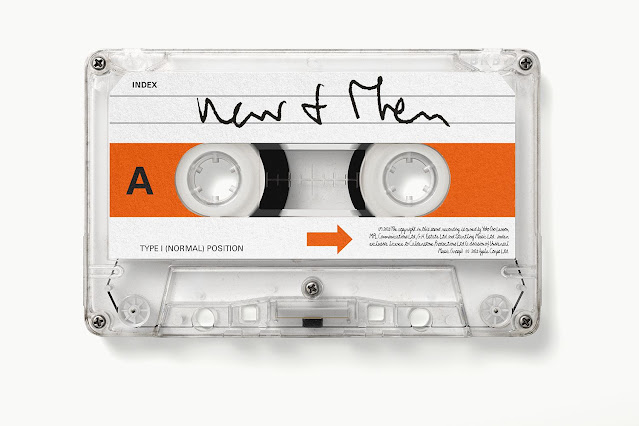by Allan Tong
Beatle fans around the world released their collective breath this morning at 10:00 am EST to hear the new--and last--Beatles single, Now and Then. They were not disappointed.
John's vocal is clear and drives the song. The strings are subtle and add depth, not sappiness. Paul's new lyrics complete John's sentiment. The harmonies, new ones from Paul and existing lines lifted from Because, Eleanor Rigby and Here, There and Everywhere, do not intrude. Same with Ringo's drums--it gets the job done. Paul's solo is finely delivered on slide guitar in tribute to George.
On the whole, the song works. What began as John's home recording c.1977 at a piano on a boombox has been expanded into a fully realized production. Now and Then has gone from a sketch into a fully framed painting.
Of course, it would have been impossible without the technology of AI (artificial intelligence). Full marks to filmmaker Peter Jackson for employing AI to isolate and highlight the various voices and instruments in the Get Back documentary which showed Paul, Ringo and their fans what this technology can do. What AI does on Now and Then is divorce John's vocal from his piano which were locked on a single mono track. Listen:
Paul, George and Ringo attempted to record Now and Then in 1994-5 for the Anthology project and would have found it a place on the third installment of that CD series, but George vetoed the song's inclusion because of the 60HZ him that ran through the demo tape. The technology simply didn't exist in the mid-90s. I suspect that with AI today George would have granted his blessing.
Now and Then is the last Beatles single ever. It's appropriate that it's coupled with the band's very first 7", Love Me Do, released in October 1962. This too has been touched by AI magic to separate the mono track into two: John's harmonica and Paul's bass guitar in the left channel, acoustic guitar and drums on the right and the vocals in the centre, which follows the formula that Giles Martin has applied to all the Beatles remixes since 2017's Sgt. Pepper. The left and right bleed slightly to avoid the "hard panning" that has afflicted many 1960s stereo mixes. Listen to the results, especially on earbuds:
The effect is subtle, yet revolutionary. AI has liberated the old mono recordings into stereo to let each instrument and vocal breathe. John's harmonica has never sounded so distinct, You can hear layers of background vocals and instruments that were buried in the mono mix all these years. Yes, we've heard Love Me Do a million times, but never like this.
Today's release is a canny way to promote the forthcoming 1962-66 re-release (on Nov. 10 along with 1967-70) that has been expanded from the original 26 tracks to 38. Thirty are new remixes, and I'm eager to hear them with the AI touch, especially She Loves You, which exists only in mono (because EMI Records lost the master tapes years ago). That said, fans have already "demixed" this song into stereo and the results sound pretty good. Can Apple surpass it?
In fact, anyone who can get their hands on the right AI software can demix at home. Witness this fan's remix of Free As A Bird, where John's vocal is no longer muddied and buried in the track (it too originated from a home demo), but shines in the forefront:
What this means is extraordinary for music history. AI can demix old recordings of not only The Beatles and their contemporaries, but of Robert Johnson, Bessie Smith, Billie Holliday and others to enhance the sonic quality of their music, present it to today's audience and capture new listeners. Of course, the demixing has to be done with care and taste. The new Love Me Do mix preserves the original overall sound of the single, but brings out the performances of each musician that were previously overlooked. Fans have already successfully demixed old Beatles demos and even the December 1962 Star Club tapes, which sound primitive. Rumour has it that Peter Jackson wants to demix these tapes. Why not? The Beatles were always innovating with new technology.
November 3, 2023: A day after the audio release comes the video. Inserts of John and George over contemporary footage of Paul and Ringo recording the track brings home an overwhelming sense of closure. Though these inserts are technically clumsy at times and overdone, they are at other moments poignant. The closing montage of black-and-white photos of the band members growing ever younger is moving. It's impossible not to feel moved, that the final chapter to a grand story has been written.

No comments:
Post a Comment